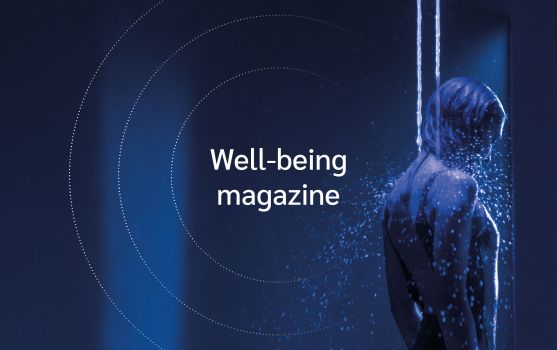
An experience shower is not just a functional element, it's a true wellness device. Increasingly common in SPA pathways and wellness centers, it represents a key moment of contact between the user and the philosophy of the space: a short yet intense moment in which water, light, sound, and scent combine to create a regenerating and immersive experience.
Because of this complexity, designing an experience shower requires careful planning that considers not only aesthetics and architectural integration, but also functionality, ease of use, and long-term maintenance. Too often, however, common mistakes are made that compromise its effectiveness and the satisfaction of the user.
In this article, we’ve outlined the 10 most frequent mistakes, dividing them into two essential areas:
1) Design Aspects
2) User Experience
1) Ignoring the SPA’s philosophy and the client’s needs
Every SPA has its own identity and a specific idea of wellness it wants to convey.
The experience shower must reflect this vision: it can be calming, energizing, sporty, or rebalancing, but never generic.
Without a clear understanding of the target audience and desired experience, you risk installing a product that feels out of place and gets little use.
2) Failing to consider the context of use
Will the shower be placed after a sauna, inside a treatment room, or as a standalone element within a wellness path? Its location strongly impacts the technical configuration: the type of jets, accessories, pre-set programs, sequences, and intensity. Overlooking this context leads to poor technical choices and an ineffective user experience.
3) Neglecting aesthetic integration
An experience shower must blend seamlessly with the SPA's interior style. Refined finishes, materials consistent with the overall design concept, and attention to visual detail all help make the experience more immersive. On the other hand, a visually out-of-place shower can disrupt the harmony of the space and weaken its emotional impact.
4) No dedicated technical compartment
While technical systems must remain hidden, they should never be overlooked.
A dedicated technical space is essential for proper operation, routine maintenance, and long-term durability. Without it, every future intervention becomes more complex and expensive, potentially causing downtime or damage.
5) No timers or energy-saving systems
In public settings, flow management and resource conservation are critical.
A smart timing system not only optimizes use but also helps reduce water and energy consumption.
Without it, operational inefficiencies arise and running costs increase—making the installation unsustainable over time.
6) Letting users control the temperature
Thermal contrast is a fundamental part of the emotional experience. Allowing users to manually adjust the temperature opens the door to mistakes, disrupts carefully planned sequences, and poses safety risks. High-quality systems rely on automatic mixing and pre-programmed sequences to ensure consistency and safety.
7) Overly complex or unclear controls
Interaction must be simple and intuitive.
In a moment dedicated to relaxation, no one wants to figure out complicated buttons or touchscreen menus full of settings. A few clearly labeled buttons with straightforward functions ensure a smooth, stress-free experience.
8) Incomplete multisensory integration
An effective experience shower stimulates all the senses.
Limiting the experience to just water means missing the point. Light (chromotherapy), scent (aromatherapy), and sound (music or nature sounds) must be integrated in a coordinated way.
Leaving out even one of these elements diminishes the overall impact.
9) Inadequate or neglected lighting
Lighting isn’t just decorative, it guides the user, shapes the atmosphere, and influences mood. An experience shower with harsh or poorly placed lighting feels cold and uninviting.
Even in standby mode, lighting should create a welcoming and sensory-ready environment.
10) Overlooking cleaning and hygiene design
Often underestimated, this is a critical point. Recessed nozzles that are hard to reach, non-durable materials, or intricate surfaces make cleaning difficult and can lead to limescale or bacterial buildup.
Cleanability must be considered from the beginning, ensuring a hygienic, low-maintenance installation.
Experience showers can become powerful assets for enhancing a SPA—provided they are designed with care and built around the needs of the user. Smart planning and an intuitive, engaging experience can make the difference between an underused installation and a truly memorable moment. Avoiding these ten mistakes means investing in real, lasting wellness.
DISCOVER ALSO